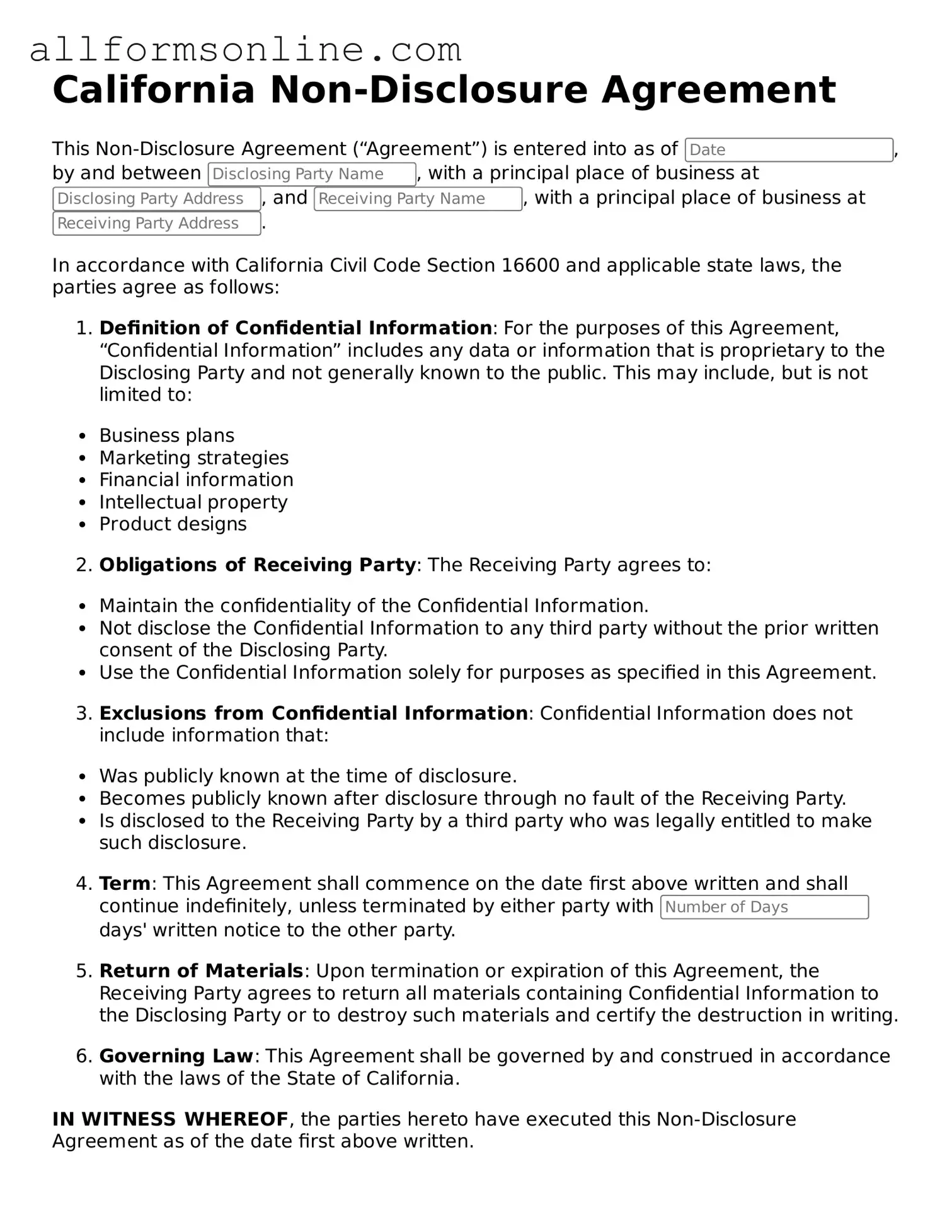What is a California Non-disclosure Agreement (NDA)?
A California Non-disclosure Agreement is a legal contract designed to protect sensitive information shared between parties. It ensures that confidential information, such as trade secrets, business strategies, or proprietary data, remains private and is not disclosed to unauthorized individuals or entities. NDAs are commonly used in business transactions, partnerships, and employment relationships to safeguard intellectual property and sensitive business information.
Who typically uses a Non-disclosure Agreement in California?
Various parties use NDAs, including businesses, entrepreneurs, employees, and independent contractors. For instance, a company might require an employee to sign an NDA to protect its trade secrets. Similarly, when two businesses are considering a partnership, they may enter into an NDA to ensure that shared information during discussions remains confidential.
What types of information can be protected under an NDA?
Typically, an NDA can protect a wide range of information. This includes, but is not limited to, business plans, customer lists, marketing strategies, financial information, and any proprietary technology or processes. The key is that the information must be deemed confidential and not publicly available.
Are there different types of NDAs?
Yes, there are generally two types of NDAs: unilateral and mutual. A unilateral NDA involves one party disclosing confidential information to another party, who agrees not to disclose it further. In contrast, a mutual NDA involves both parties sharing confidential information with each other, with both agreeing to protect the information from disclosure.
How long does the confidentiality obligation last under an NDA?
The duration of confidentiality obligations can vary. Some NDAs specify a fixed term, such as two or five years, while others may state that the obligation lasts indefinitely or until the information becomes public through no fault of the receiving party. It is essential to clearly outline the duration in the NDA to avoid misunderstandings.
What happens if someone breaches an NDA?
If a party breaches an NDA, the injured party may seek legal remedies. This can include monetary damages, injunctive relief, or specific performance, depending on the circumstances. Legal action can be costly and time-consuming, making it crucial for all parties to adhere to the terms of the agreement.
Can an NDA be enforced in California?
Yes, NDAs are enforceable in California, provided they meet certain legal requirements. The agreement must be reasonable in scope, duration, and geographic area. Additionally, the information protected must be clearly defined and genuinely confidential. Courts will generally uphold NDAs that are well-drafted and do not impose unreasonable restrictions.
Is it necessary to have a lawyer draft an NDA?
While it is not strictly necessary to hire a lawyer to draft an NDA, doing so is highly advisable. A legal professional can ensure that the NDA is tailored to your specific needs, complies with applicable laws, and effectively protects your interests. A well-drafted NDA can prevent potential disputes and misunderstandings down the line.
Can I modify a standard NDA template for my needs?
Yes, many individuals and businesses choose to modify standard NDA templates to suit their specific circumstances. However, it is crucial to ensure that any modifications do not inadvertently weaken the agreement or create ambiguities. Consulting with a legal professional during this process can help ensure that the modified NDA remains effective and enforceable.
What should I do if I need to disclose confidential information to a third party?
If you need to disclose confidential information to a third party, it is essential to have them sign an NDA before sharing any sensitive information. This protects your interests and ensures that the third party understands their obligations regarding confidentiality. Additionally, consider limiting the scope of the information shared to only what is necessary for the purpose of the disclosure.
